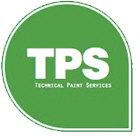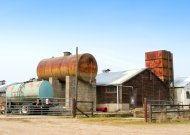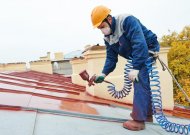IMPORTANT GUIDANCE FOR PREPARATION
PLEASE READ BEFORE CALLING US OR SELECTING AND ORDERING YOUR PAINT.
Introduction
This information is designed to provide guidance ahead of selecting and purchasing paint or starting any project. Please call us on 01202 295570 before your purchase.
1 Preparation
When using any coating it is vital to ensure that the surfaces to be treated are well prepared and clean before coating as this will help ensure that surface contamination is minimised and will help achieve a quality finish.
2 Using the right tools for the job
All coatings require new or clean, fresh tools (brushes, rollers etc) to help prevent cross-contamination from other solvents which could impair the performance of the products you are using.
3 Selecting the appropriate time of year
When using high-performance coatings externally, you should always consider the time of year you are planning to carry out the work. Many of our products are temperature sensitive and have an optimum temperature application range to ensure their best performance.
If you are considering applying paint or other coatings during a period of cold or cooler temperatures, you should take all precautions to ensure your selected product does not fail. Failure will be caused by application at a temperature determined to be outside the optimum range (in this case “too cool”) by the manufacturer as set out in the associated Technical Data Sheet. Very often, users of paint products are under pressures such as timescale or budget to be able to fully consider temperature for application and importantly, subsequent drying and curing of the product and the effects on performance and finish.
As Autumn turns to Winter, bringing with it fewer hours of daylight and the likelihood of increased precipitation and frost, several factors must be considered when applying paints and coatings.
3a Substrate temperature (of the surface to be painted):
During late Spring and in the Summer months, a good rule of thumb is to plan your painting so that you're always working in the shade, so that substrate temperatures don't get too hot. In cooler months however, application in direct sunlight is the best practice to adopt as this will help increase surface temperatures up into the “safe” range (15C +) even when air temperatures are cooler. In general, paints should be applied only when both surface and air temperatures are above 5 – 10C and primers should only be applied when temperatures are above 10C in order that they dry properly.
In Winter, floors and metal surfaces will generally be several degrees colder than the air temperature and this should be factored in to timescales and budgets; where practical, the use of heating systems should be considered to raise temperatures in the subject environment but avoiding paraffin or propane heaters.
If the surface is porous, it should be checked for residual dampness using a moisture meter. If moisture exceeds 5%, DO NOT proceed with painting.
Generally, the best window of opportunity for painting in the cooler conditions of Winter is between 10.00 am and 14.00 pm, but this can be considerably shorter in marginal conditions. When working on external surfaces, dew is another factor to consider, both in the mornings and later in the day.
3b The paint or coating:
As temperatures drop, so the viscosity (the property of a fluid that resists flow) of the coating will increase. This change in the paint will hinder the flow of the coating during application. Often, a small drop of thinners may help but it is recommended that before use, the paint is stored in a warm place (such as an airing cupboard or boiler room) or perhaps warmed very gently in warm water in a bath or bucket. If thinners are used, it should be noted that this action will reduce the solids content of the paint leading to a less durable and predictable coating. Water-borne coatings must not be allowed to freeze during transportation or storage as they will be damaged and become unstable; the effects of the freezing process are irreversible, and the paint must be disposed of without use.
It's also important that air temperatures don't drop below freezing the first night after paint has been applied, since curing paint can still contain moisture that will crystallize in sub-freezing temperatures, instead of evaporating out into the atmosphere as it's designed to do. If temperatures do drop, problems may very often not manifest themselves until the following Spring as moisture will remain “dormant” over the Winter, becoming apparent in the paint in the form of blisters once the Spring sun has warmed the surface of the paint.
3c Humidity:
Relative humidity is harder to measure than temperature, but it plays an equally important role in the curing of the paint or coating. This would be most relevant when decorating a pool hall environment. It is recommended to always empty your swimming pool or having it hermetically sealed before the application of any paint or coating, as the humidity would be too high for the correct application and curing of the paint or coatings. The ideal external relative humidity is 50%, but curing times are significantly affected when humidity levels exceed 70%. In high-humidity situations, surfactant leaching may become apparent - brown or white discoloration on the surface of the paint. This can generally be rinsed off or may be left to wash away with day-to-day weathering.
Low relative humidity can also be a problem, because the paint surface may dry too quickly and lead to blistering later.
4 Identifying the correct product
When researching and selecting a coating for your project, first make sure you have all the information needed, such as substrate type, details of any previous coating (type, age etc), environmental/weather considerations and so forth. A simple, yet handy Check-List could be as follows:
What is the substrate? (this is the surface you wish to treat e.g. wood, metal, ceramic, concrete etc.)
Is it new or old?
Is it internal or external?
How much area is to be coated?
Has it been painted before and if so, with what?
Are there any unusual conditions we need to consider? (a damp environment, high/low temperatures, heavy foot traffic etc).
The more detail you can provide to us, the better equipped we will be to assist you.
5 Test areas/samples
It is our recommendation that if you have an unusual surface or you are unsure what the surface has been painted with before, you perform a test on a small area to ensure compatibility. We are happy to carry out tests on unusual substrates, but we will require a sample to be sent to our laboratory as we are unable to offer on-site testing. We are however able to offer advice on what should and can be tested on-site and with which combination of products. We will send the paint sample for which a standard charge of £35.00+VAT will be made. This charge will be deducted upon placing an order with us.
6 Painting Concrete
Most concrete needs to cure before any coating can be applied. The main cause of paint failure when applying to concrete is that the concrete has not had the full period to cure; very often this may be up to six months. In some circumstances however, the substrate may be painted earlier if the correct specialist product is used, such as our own WBP1030 Primer or RP10 Chlorinated Rubber Primer, followed by R34 Chlorinated Rubber Paint. Please contact our Technical Department for guidance on alternative coatings.
7 Painting on to Rust
In most cases, painting directly on to rust should never be attempted as this will not stop the rust from continuing to form under the paint film. Always remove rust as part of the substrate preparation. When rust can’t be removed for any reason, the surface should be pre-treated with a suitable converter and remover of rust such as Fertan, before coating.
8 Painting Powder Coated surfaces
Painting over powder coating is often tricky but can be performed by using specialist primers followed by specialist finishes. See our WBP1030 Primer.
9 Metallic Finishes
Applying metallic coatings on to large surface areas should only be performed by spray application. Small areas can occasionally be brushed with care.
10 Colour Matching
Increasingly there is a demand for individual or unusual colour matching by the consumer, as well as a requirement for the matching of corporate colours for large organisations. We also continue to see a need for matching paint colours with the surrounding environment. Most paint manufactures will only mix bespoke colours in large volumes. We can mix colours in quantities as low as 50.0 Litres in many of our coatings and finishes. We do however require a sample of the colour that you would like us to match. We will confirm our ability (or otherwise) to match the colour and sheen levels upon receipt.
Please note that the RAL range is a range of colours and NOT a range of paint types or finishes. It is important to establish the correct paint for your intended use and then ascertain its colour availability. BS4800 & BS381C ranges are also available.
Certain manufacturers’ colours are copyrighted, thus only a near match can be offered. Always ensure that any mixed colours are always applied from the same batch and that you purchase enough to complete the job in full. In case a second batch needs to be purchased for the completion of the second coat, or the surface area to be painted has changed, the two batches should be boxed together for continuity of colour. A small amount should be left with the customer to allow for touching up any damage to the surface at a future date. This should be marked with the product reference, date and colour. Please feel free to call us about these services.
11 When to use a Professional Decorator
Subject to the product, substrate, building etc, a Professional Decorator or Contractor may be required to perform the task of applying certain high-performance coatings. This is because some products contain potentially harmful chemicals and solvents and when they are in a wet form, will have higher than normal VOCs (Volatile Organic Compounds) and must not be used by an unqualified person.
In some instances, water-borne alternatives are available; please call us for advice on 01202 295570.
12 Disposal Advice
After using any paint or coating it is advisable to decant the left-over paint into a small airtight container, marking the container with the date, product reference and colour code. This will help keep the paint in good condition for up to about year, to be used for any touch-up that may be required at a future date. Please also note our contact details in case further paint is required. When appropriate, the container should be allowed to dry out before being taken to your local council waste disposal centre. Two Pack coatings cannot be kept, and your decorator or contractor should dispose for you once the job is completed.
13 Important - Health & Safety
When using any coatings, it is imperative that the individual Health & Safety requirements are observed. Please ensure all accompanying Technical and Health & Safety Data Sheets are read, and their instructions followed before commencing any works. A Method Statement and/or Risk Assessment may be required in certain situations. Data Sheets are available to download from our website.
Your Health and Safety responsibilities do not end once you have finished with a hazardous product or substance. LEGALLY you are also responsible for the correct disposal or recovery of any hazardous substance.
There are additional requirements for the disposal or treatment of waste and containers used for materials with "hazardous characteristics". These are termed "special wastes" and include solvent-based paint. We will gladly provide a Technical Data Sheet that will identify if the waste is a "special waste".
We recommend that you confirm with the HSE (Health & Safety Executive) for current data and that you request up-to-date information from any other suppliers that you may be using.
14 For Employers: What is COSHH?
The Control of Substances Hazardous to Health Regulations (2002) (amended) requires every business to protect its workers, customers and the general public from the harmful effects of hazardous substances.
COSHH is a useful tool of good management which sets eight basic measures that employers, and sometimes employees, must take. These are set out in a leaflet available from the HSE in a simple step-by-step approach to help you assess risks, implement any measures needed to control exposure and establish good working practices.
We recommend visiting the website of the Health and Safety Executive at www.hse.gov.uk/coshh
This information is provided as a guide only. Please ensure you have satisfied yourself that your COSHH Assessment is in accordance with the Regulations and Approved Code of Practice.
Technical Paint Services does not accept any responsibility for your COSHH Assessment.
The foregoing information is given in good faith, based upon tests and experience. It should be noted that recommendations are made without guarantee, as the application and use of our products are beyond our control.
This information is available to Download HERE.







